 |
 |
 |
| |
HIV Diagnoses Among People Who Inject Drugs -United States, 2010-2016
|
| |
| |
Poster pdf attached
Download the PDF here
Poster pdf attached
"The longstanding decline in HIV diagnoses among
PWID has slowed- and perhaps even stalled."
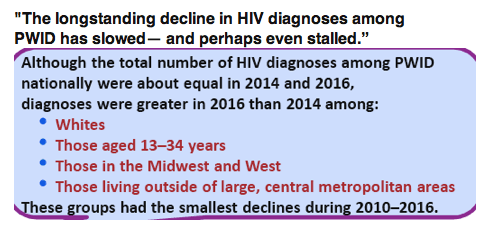
Reported by Jules Levin
CROI 2018 March 4-7 Boston MA
Sheryl B. Lyss1; Tianchi Zhang2; Alexandra M. Oster1
1Division of HIV/AIDS Prevention, Centers for Disease Control and Prevention, Atlanta, GA. 2. ICF, Atlanta, GA.
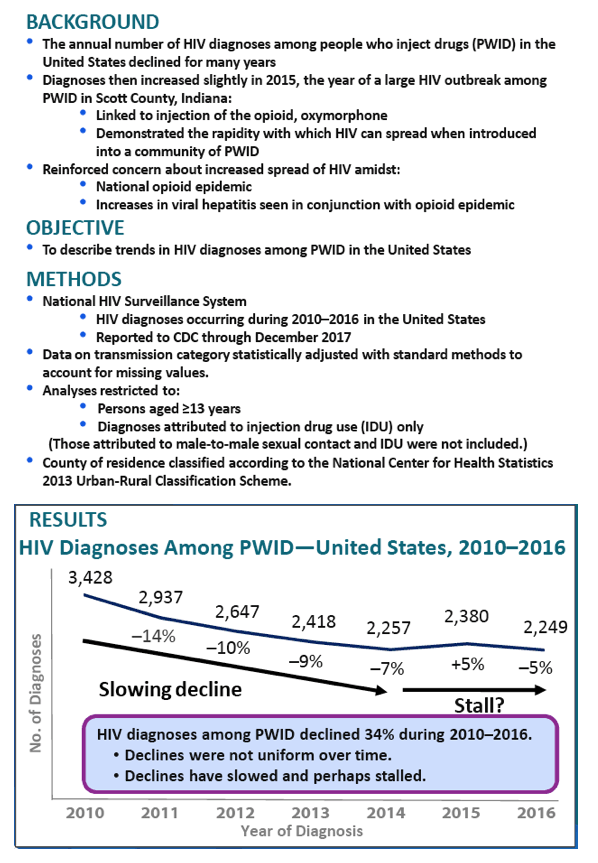
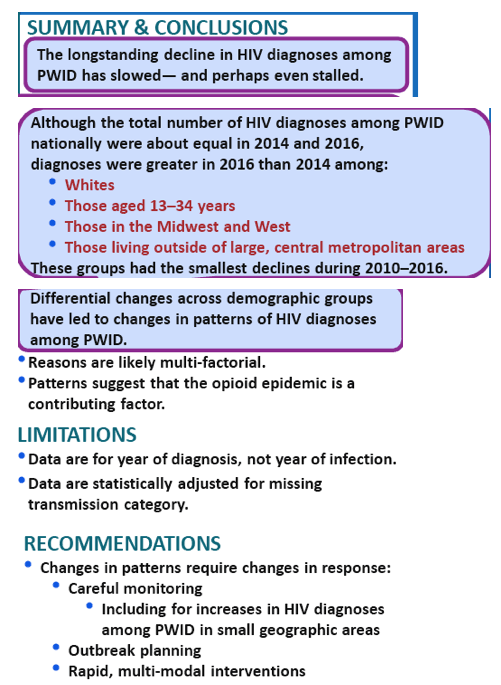
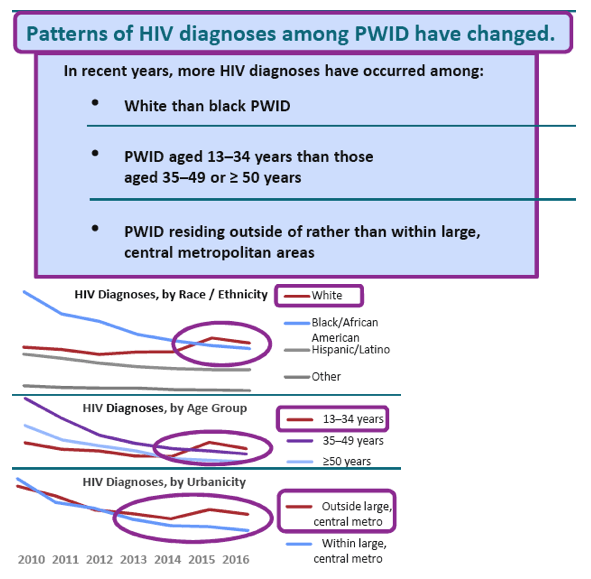
Program Abstract:
The number of HIV diagnoses among people who inject drugs (PWID) in the United States declined substantially over the past decade, then increased slightly in 2015, the year of a large HIV outbreak among PWID in Scott County, Indiana. We describe trends in HIV diagnoses among PWID to elucidate the observed increase.
We used National HIV Surveillance System data reported through June 2017 for diagnoses occurring during 2010-2015 and preliminary data for 2016; missing data were imputed with standard methods. We included persons aged ≥13 years with HIV attributed specifically to injection drug use (IDU) (i.e., those attributed to both IDU and male-to-male sexual contact were not included). To assess the influence of the Scott County outbreak, we examined 2015 diagnoses including and excluding those reported from Scott County.
HIV diagnoses among PWID decreased 35% nationally during 2010-2014 from 3421 to 2229, with annual declines of 14% (2010-2011), 10% (2011-2012), 9% (2012-2013) and 7% (2013-2014) (Table). During 2010-2014, diagnoses declined 35% among both males and females; declines varied across racial/ethnic groups, age groups and U.S. Census regions and were <20% among whites (-10%), those aged 13-34 years (-19%), and in the West (-18%). During 2014-2015, diagnoses among PWID increased by 117 (5%) to 2347 nationally; increases among whites (+233; 32%), those aged 13-34 years (+161; 22%), and in the Midwest (+186; 85%) are consistent with the distribution of the 148 Scott County cases in 2015. Excluding Scott County cases, diagnoses among PWID decreased by 31 (1%) to 2199, but increased among whites (+89; 12%), those aged 13-34 years (+81; 11%), and in the Midwest (+38; 17%). The preliminary number of 2016 diagnoses among PWID is similar to that for 2014.
The national increase in HIV diagnoses among PWID during 2014-2015 followed a slowing decline during 2010-2014. Although the Scott County outbreak was largely responsible for the increase in 2015 cases, without Scott County cases, during 2014-2015 declines stalled nationally, and diagnoses increased in some demographic groups with slower declines during 2010-2014. The extent to which trends in the number and shifting characteristics of HIV diagnoses among PWID reflect a growing number of PWID in the United States, increased testing, increased reporting, or other causes cannot be determined from these data alone. Vigilance is needed so that longstanding gains in preventing HIV among PWID are not reversed.
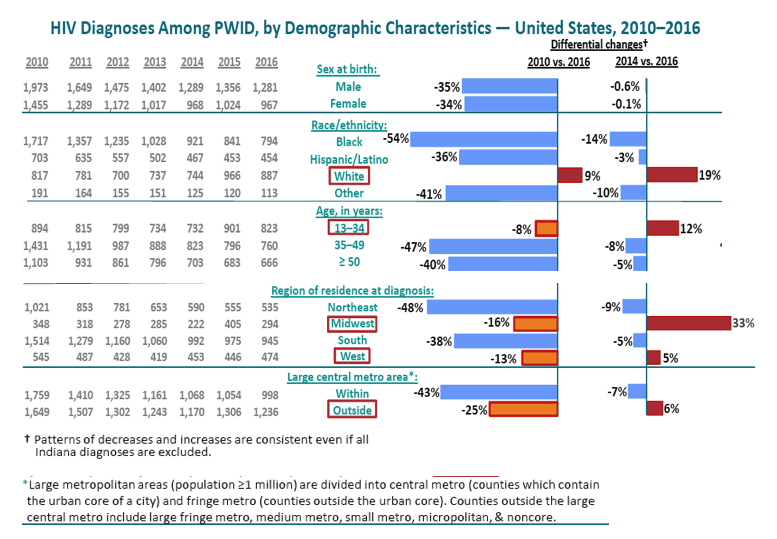
|
| |
|
 |
 |
|
|